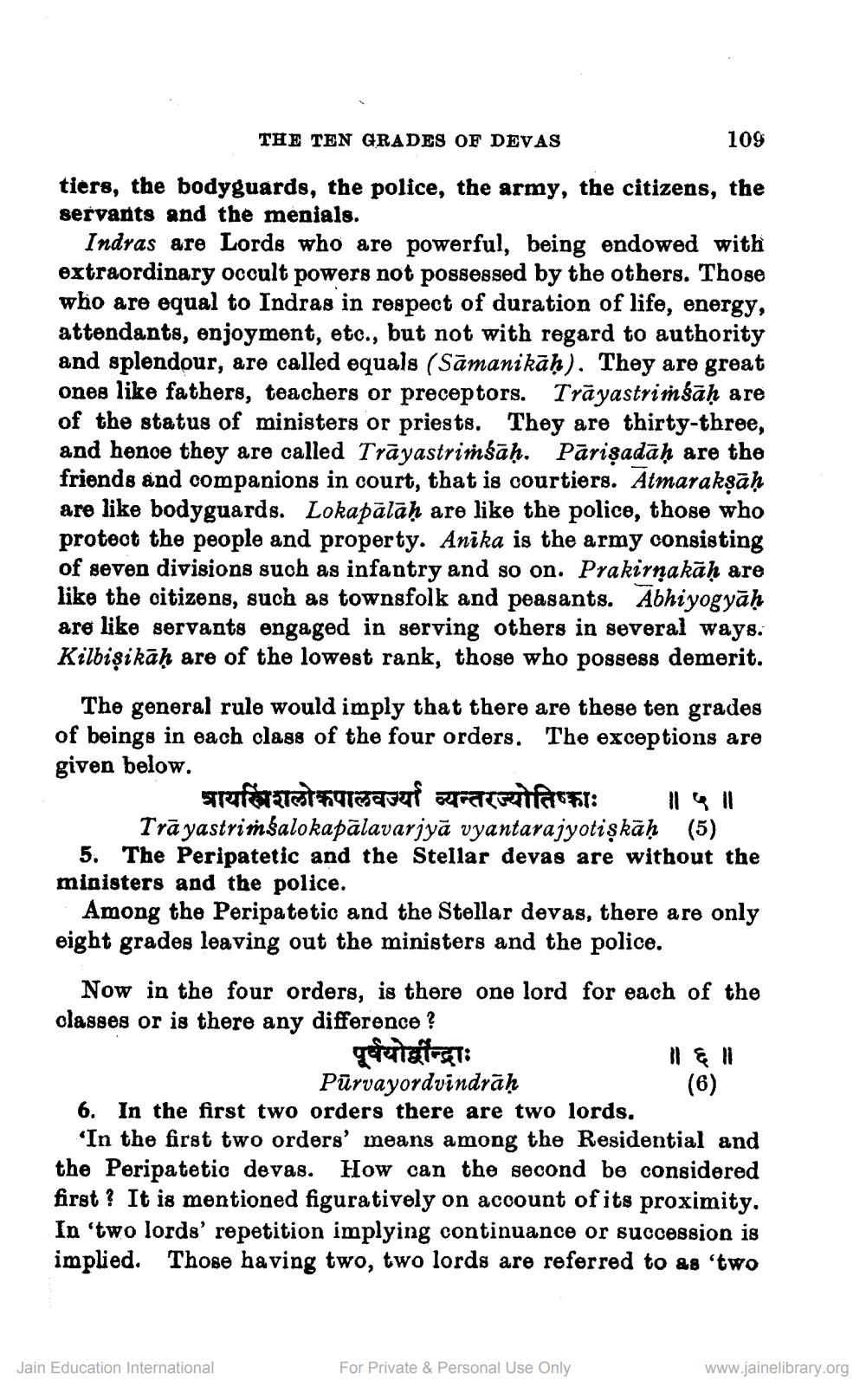________________
THE TEN GRADES OF DEVAS
109
tiers, the bodyguards, the police, the army, the citizens, the servants and the menials.
Indras are Lords who are powerful, being endowed withi extraordinary occult powers not possessed by the others. Those who are equal to Indras in respect of duration of life, energy, attendants, enjoyment, etc., but not with regard to authority and splendour, are called equals (Sāmani kāḥ). They are great ones like fathers, teachers or preceptors. Trayastrimśāḥ are of the status of ministers or priests. They are thirty-three, and hence they are called Trāyastrimśāḥ. Pārişadāḥ are the friends and companions in court, that is courtiers. Atmaraksāḥ are like bodyguards. Lokapālāḥ are like the police, those who protect the people and property. Anika is the army consisting of seven divisions such as infantry and so on. Prakirnakāḥ are like the citizens, such as townsfolk and peasants. Abhiyogyāḥ are like servants engaged in serving others in several ways. Kilbişikāḥ are of the lowest rank, those who possess demerit.
The general rule would imply that there are these ten grades of beings in each class of the four orders. The exceptions are given below.
प्रायशिलोकपालवा व्यन्तरज्योतिषकाः ॥५॥ Trayastrimsalokapālavarjyā vyantarajyotişkāḥ (5) 5. The Peripatetic and the Stellar devas are without the ministers and the police.
Among the Peripatetic and the Stellar devas, there are only eight grades leaving out the ministers and the police.
Now in the four orders, is there one lord for each of the classes or is there any difference ?
पूर्वयोवीन्द्राः Pūrvayordvindrāḥ
(6) 6. In the first two orders there are two lords.
'In the first two orders' means among the Residential and the Peripatetic devas. How can the second be considered first? It is mentioned figuratively on account of its proximity. In 'two lords' repetition implying continuance or succession is implied. Those having two, two lords are referred to as 'two
Jain Education International
For Private & Personal Use Only
www.jainelibrary.org




